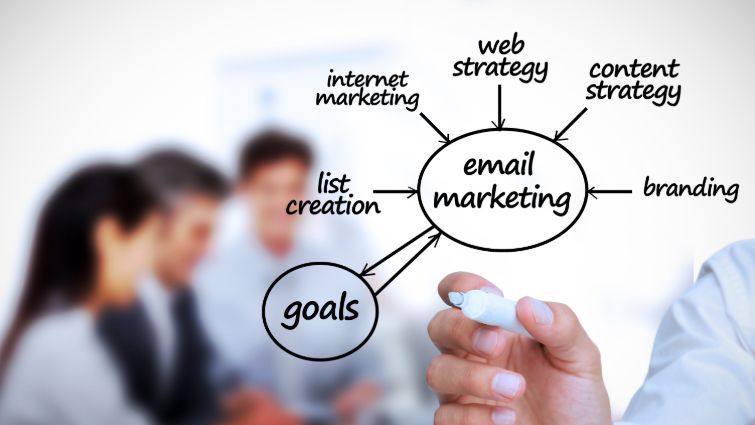EMAIL MARKETING - A POWERFUL MARKETING TOOL
- Home
- EMAIL MARKETING - A POWERFUL MARKETING TOOL
- OCTOBER 18, 2021
- Admin
EMAIL MARKETING - A POWERFUL MARKETING TOOL
Email marketing is nothing new, it’s several decades old. But the fact is that even after decades and the advent of several social media channels, too, the power of email mailing has not diminished. In fact, it is on an upward swing.
According to the research firm Statistica, around 306 billion emails were sent and received daily in 2020 across the world. The projected growth is the email marketing is going to increase to over 376 billion daily emails.
Now, you might have understood the simple email marketing is not something that you can keep aside. It is one of the powerful and critical marketing tools.
Email marketing is all about sending emails to people in huge numbers. It's often used in sales to generate leads or in marketing to create awareness.
But you're wrong if you thought you could just send emails in bulk using some email marketing tools and tick your bucket list. Email marketing should be done after careful planning as a thought-through process, simply because a person's inbox is inundated with hundreds of emails from different sources. Unless your mail stands out or piques the recipient's curiosity, it's going to end up in the trash box, or your id will be unsubscribed.
Hence, to succeed in email marketing, you need to have a sound email marketing strategy. Click and bounce are two critical metrics in email marketing. Before we get into the measuring tools, let's know how to create an email marketing strategy.
Email marketing is one of the top marketing strategies, and it's often automated. But to start with, you need to have three essential elements- email list, email service provider, and goals.
Email List: This is the active email list, a database of email contacts interested in receiving communications from your business/brand.
To create an email list, you can roll out offers to your target audience by offering coupons in exchange for an email address.
Email Service Provider: An email service provider offers an email marketing platform, a software that manages your email list. Email marketing software helps to develop and execute automated email campaigns. An email service provider helps you customize interactions with your audience, helping you boost engagement and conversion rates.
Goals: Email marketing is used for various business purposes. Hence you should have defined goals- and it can be to improve sales, create brand awareness, generate leads, improve customer loyalty or keep your customers engaged.
To create an effective email marketing campaign, there should be an alignment between your email list, service provider, and goals. The initial stage in email marketing is to segment your subscriber data based on subscriber actions or demographics. In the second step, create an email to inspire customers to perform some action, your goal.
While writing an email, your subject line is critical. Since subscribers are overwhelmed by emails, you should create a catchy or intriguing subject line. Often, subject lines that address pain points, fix a problem, or solve an issue interest the subscribers.
The Art And Science Of Writing Email Subject Line
- Restrict your characters to 50
- Throw the spotlight on your most exciting offer
- Captivate your subscriber's emotions or aspirations
Test them: Before sending your emails, do not forget to test them. Look for typos, text formatting, and links and confirm that there are no gaps.
Proofreading is critical for your content, and do not forget to run a spell check before hitting the send button.
Choose the right time: You should never choose a day or timing randomly to schedule your email campaigns. Select a time that works for your audience based on your customer insights. If your email is on top of the inbox, they are more likely to open and read it when they check their emails. Most studies indicate 10 am and 2 pm is the best timings to send your emails. Finally, use your ESP to send emails and monitor the campaign automatically.
Key Metrics-Clicks and Bounces
Clicks and bounces are the two key metrics that matter in email marketing. If the email gets bounced, it means they didn't reach the intended recipient, and it is something that you need to verify and find out the reason. When a subscriber clicks on the links provided in the email to know more about the product or read more on the content, it shows interest. As a benchmark, the average click-through rate is 11.3%, and the bounce rate is 9.4%.
An engaging template, catchy subject line, persuasive content- all these can improve your click-through rate.

